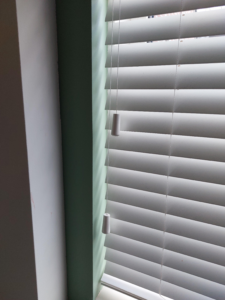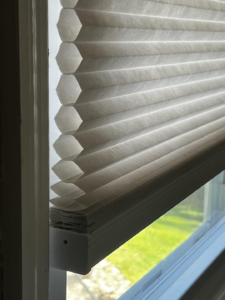Cleaning your blinds can feel like a cumbersome chore, especially when you think about disassembling them from the wall. However, maintaining the cleanliness of your blinds is essential for both aesthetics and air quality in your home. With the right tools and techniques, you can effectively clean your blinds without the hassle of taking them down. This guide will walk you through each step of the cleaning process to ensure your blinds look their best.
Why Clean Your Blinds?
Blinds accumulate dust, allergens, and other particles over time, which can affect your indoor air quality. Regular cleaning not only keeps your home looking fresh but also helps reduce allergens, making the environment healthier for you and your family. Additionally, dirty blinds can become discolored and worn, leading to the need for replacements sooner than necessary.

Supplies You’ll Need
Before you begin, gather your supplies to streamline the process. Here’s a list of what you’ll need:
- Microfiber Cloth or Duster: Ideal for trapping dust without scratching surfaces.
- Vacuum Cleaner with Brush Attachment: Helps to remove dirt and debris effectively.
- Bucket of Warm Soapy Water: Use a mild dish soap for gentle cleaning.
- Sponge or Soft Cloth: For spot cleaning and wiping down the blinds.
- Vinegar-Water Solution: A natural cleaning solution for stubborn stains (mix equal parts vinegar and water in a spray bottle).
- Old Toothbrush or Paintbrush: Useful for reaching small crevices and intricate designs.
Step 1: Dusting Your Blinds
Start the cleaning process by dusting your blinds to remove any loose particles. This initial step is crucial as it prevents dirt from turning into a mud-like residue when wet cleaning begins.
- Use a Microfiber Cloth or Duster: Gently wipe each slat, starting from the top and moving downward. This technique ensures that dust falls to the ground, rather than settling on already cleaned areas.
- Alternative Tools: For blinds with intricate designs or hard-to-reach areas, an old toothbrush or paintbrush can effectively dislodge dust without damaging the material.
Step 2: Vacuuming
Once the dusting is complete, it’s time to vacuum the blinds to capture any remaining debris.
- Attach the Brush Head: Use the brush attachment on your vacuum cleaner, which is designed to gently lift dirt without pulling on the slats.
- Vacuum Each Slat: Run the brush along each slat and along the edges. This is especially effective for fabric blinds, as it lifts dirt without causing damage.
Step 3: Spot Cleaning Stains
If you spot any stains or marks on your blinds, it’s important to address these promptly to prevent them from setting.
- Prepare Your Cleaning Solution: Fill a bucket with warm soapy water or use the vinegar-water solution in a spray bottle.
- Use a Sponge or Cloth: Dip a sponge or soft cloth into your cleaning solution, wring it out to avoid excess moisture, and gently wipe the stained area.
- Rinse with a Clean Cloth: After cleaning, use a separate clean, damp cloth to remove any soap or vinegar residue, followed by a dry microfiber cloth.
Step 4: Final Wipe Down
Once you have spot cleaned, it’s important to do a final wipe down to ensure your blinds are completely clean and free from moisture.
- Use a Dry Microfiber Cloth: Gently wipe each slat to remove any residual moisture. This step helps to prevent water spots and keeps the material looking fresh.
Step 5: Regular Maintenance
To make cleaning your blinds easier in the long run, establish a regular maintenance routine.
- Weekly Dusting: Use a duster or microfiber cloth weekly to keep dust at bay. This habit prevents build-up and reduces the need for intensive cleaning sessions.
- Seasonal Deep Cleaning: Consider doing a thorough cleaning every few months, especially in areas prone to dust and allergens.
Bonus Tips for Specific Blinds

Different types of blinds may require specific cleaning techniques. Here are some tips based on the material:
- Vinyl Blinds: These are easy to clean with soapy water. Avoid using abrasive cleaners that could scratch the surface.
- Wooden Blinds: Use a slightly damp cloth for cleaning to avoid water damage. A special wood cleaner can also help maintain their finish.
- Fabric Blinds: Vacuum regularly and treat stains promptly with a fabric-safe cleaner. Avoid soaking these blinds as excess moisture can lead to mold and damage.
Conclusion
Cleaning your blinds without removing them from the wall is entirely achievable and can be done with minimal effort. By following these steps, you can maintain a clean and inviting atmosphere in your home. Remember that regular upkeep is crucial; simple actions like weekly dusting and seasonal deep cleaning will keep your blinds looking fresh and prolong their lifespan. By investing a little time and effort, you can enhance your living space and improve your indoor air quality—all without the hassle of disassembling your blinds!